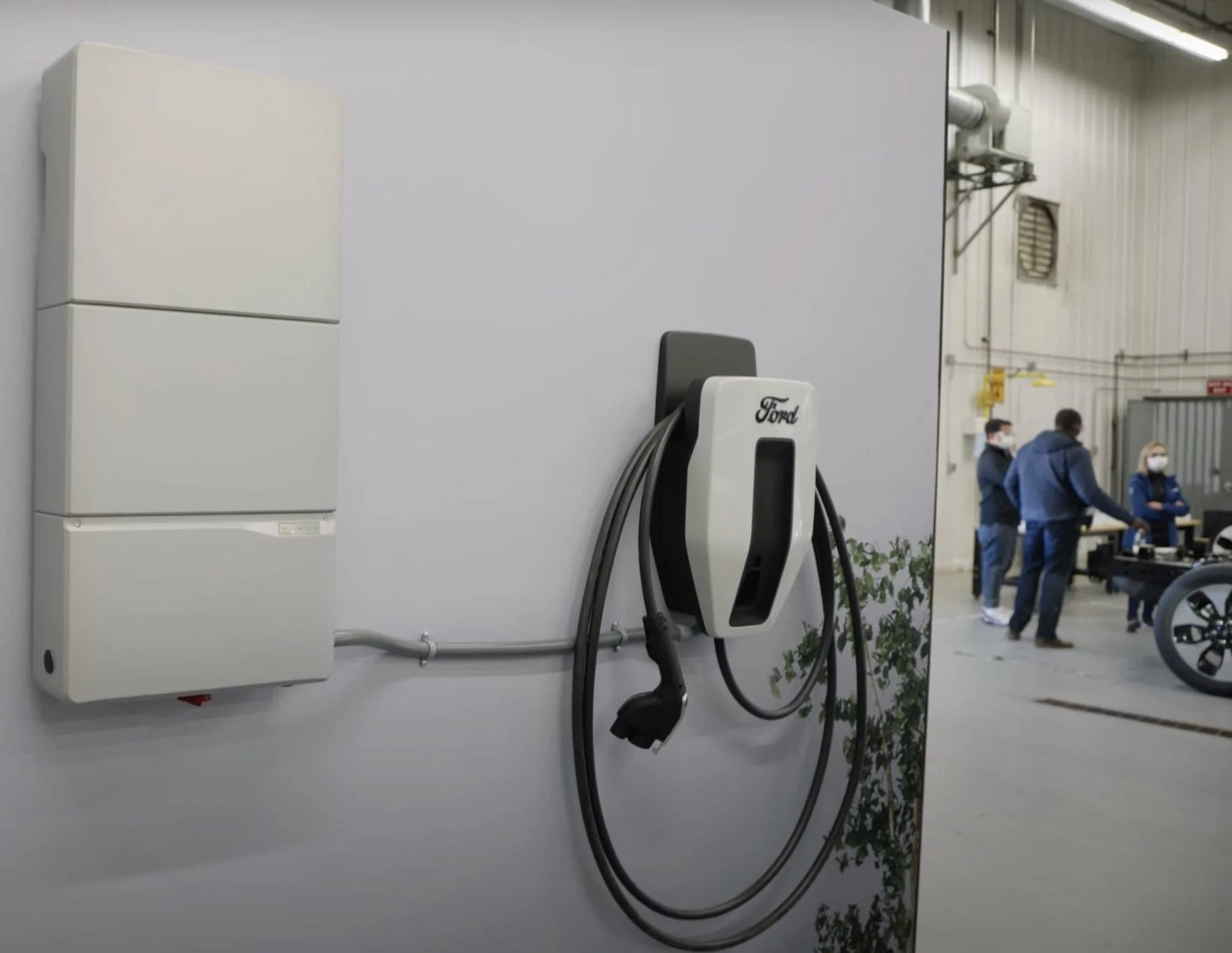shikataganai
Well-known member
- Thread starter
- #1
A few thoughts bouncing around my head regarding the 80A Charge Station Pro:
1) I hope it's available for purchase independent from the truck during calendar year 2021, because as the law is currently written the 30% EVSE + installation tax credit expires at the end of this year. I doubt this will happen, though.
2) This would only be relevant to people opting for the standard range battery models who want the 80A EVSE for the Intelligent Backup Power functionality. (One wouldn't get any additional charging speed out of it as opposed to any 48A EVSE as the standard range model is limited by the 11.2 kW input power of its onboard charger. And the extended range buyers wouldn't care since the 80A EVSE is included in that $10k upgrade price.)
3) The 80A EVSE uses a CCS connector! Not for charging, as the J1772 part of it handles that AC charging business, but for feeding DC power back to the separate wall-mounted inverter.
https://www.caranddriver.com/news/a36480020/2022-ford-f-150-lightning-charge-station-pro-explained/
Here's a picture that I snagged from a video of Ford's facilities showing the actual 80A EVSE with the separate inverter box next to it and the CCS connector:

4) We'll get more details eventually, but it's unclear to me whether a) the inverter panel and thus the Intelligent Backup Power is a standard or an optional add-on to the 80A EVSE itself (noting that it's clear that such backup power needs the 80A EVSE—just not clear if that's sufficient), and b) whether there's a separate transfer switch necessary on top of this.
5) What's really exciting to my nerd-brain since power outages are rare events is Ford Intelligent Power. That's vehicle-to-grid (as opposed to vehicle-to-home with the Intelligent Backup Power feature that's widely publicized). The Intelligent Power will let Lightnings plugged into the EVSE buffer power to the home even absent a power outage, so as to allow price arbitrage between peak and off-peak electricity rates. That's cool.
Tiny back of napkin math on how this might play out, using the time of use pricing from one of my utilities:
21 cents/kWh from 5-10 PM
7 cents/kWh outside of that
Let's assume 90% charger/inverter efficiency and, to make this as dramatic as possible, a full 9.6 kW load for those 5 hours every day.
So we'd give 9.6 kW * 5 hours * 90% efficiency to the grid each day, credited at 21 cents/kWh. Our grid bill would be $9.07 cheaper, but then we'd have to recharge: 9.6 kW * 5 hours / 90% efficiency to get pack charge to the same level, which at 7 cents/kWh would cost $3.73.
By this math, plugging in the truck for a bit over 10 hours would therefore earn $5.34 each day, possibly more if the grid owners provide their own incentives (as they should since this would reduce peak demand and thus their need to spin up expensive and dirty peakers). $160/mo is better than a stick in the eye for sure!
1) I hope it's available for purchase independent from the truck during calendar year 2021, because as the law is currently written the 30% EVSE + installation tax credit expires at the end of this year. I doubt this will happen, though.
2) This would only be relevant to people opting for the standard range battery models who want the 80A EVSE for the Intelligent Backup Power functionality. (One wouldn't get any additional charging speed out of it as opposed to any 48A EVSE as the standard range model is limited by the 11.2 kW input power of its onboard charger. And the extended range buyers wouldn't care since the 80A EVSE is included in that $10k upgrade price.)
3) The 80A EVSE uses a CCS connector! Not for charging, as the J1772 part of it handles that AC charging business, but for feeding DC power back to the separate wall-mounted inverter.
https://www.caranddriver.com/news/a36480020/2022-ford-f-150-lightning-charge-station-pro-explained/
Here's a picture that I snagged from a video of Ford's facilities showing the actual 80A EVSE with the separate inverter box next to it and the CCS connector:

4) We'll get more details eventually, but it's unclear to me whether a) the inverter panel and thus the Intelligent Backup Power is a standard or an optional add-on to the 80A EVSE itself (noting that it's clear that such backup power needs the 80A EVSE—just not clear if that's sufficient), and b) whether there's a separate transfer switch necessary on top of this.
5) What's really exciting to my nerd-brain since power outages are rare events is Ford Intelligent Power. That's vehicle-to-grid (as opposed to vehicle-to-home with the Intelligent Backup Power feature that's widely publicized). The Intelligent Power will let Lightnings plugged into the EVSE buffer power to the home even absent a power outage, so as to allow price arbitrage between peak and off-peak electricity rates. That's cool.
Tiny back of napkin math on how this might play out, using the time of use pricing from one of my utilities:
21 cents/kWh from 5-10 PM
7 cents/kWh outside of that
Let's assume 90% charger/inverter efficiency and, to make this as dramatic as possible, a full 9.6 kW load for those 5 hours every day.
So we'd give 9.6 kW * 5 hours * 90% efficiency to the grid each day, credited at 21 cents/kWh. Our grid bill would be $9.07 cheaper, but then we'd have to recharge: 9.6 kW * 5 hours / 90% efficiency to get pack charge to the same level, which at 7 cents/kWh would cost $3.73.
By this math, plugging in the truck for a bit over 10 hours would therefore earn $5.34 each day, possibly more if the grid owners provide their own incentives (as they should since this would reduce peak demand and thus their need to spin up expensive and dirty peakers). $160/mo is better than a stick in the eye for sure!
Sponsored



